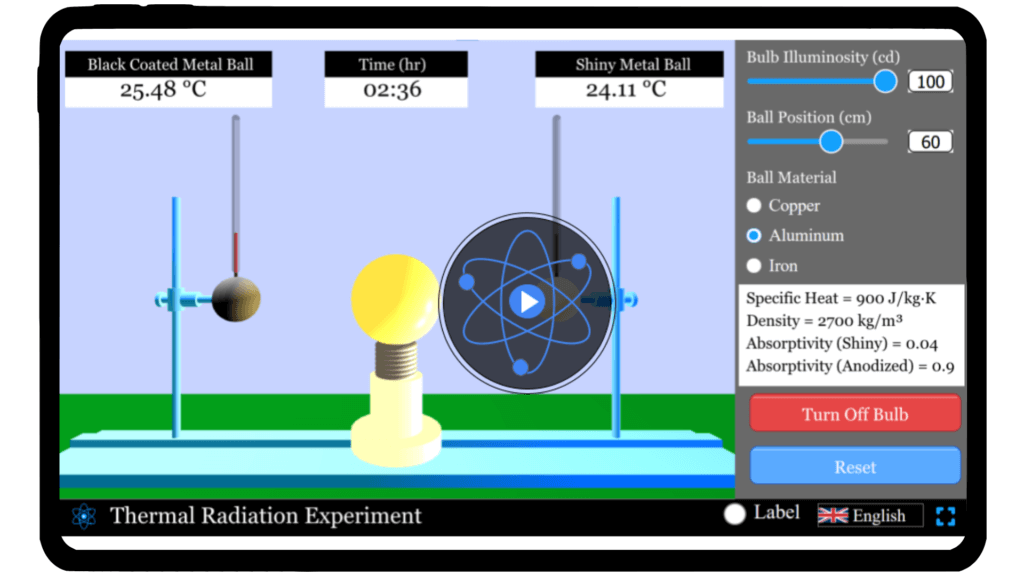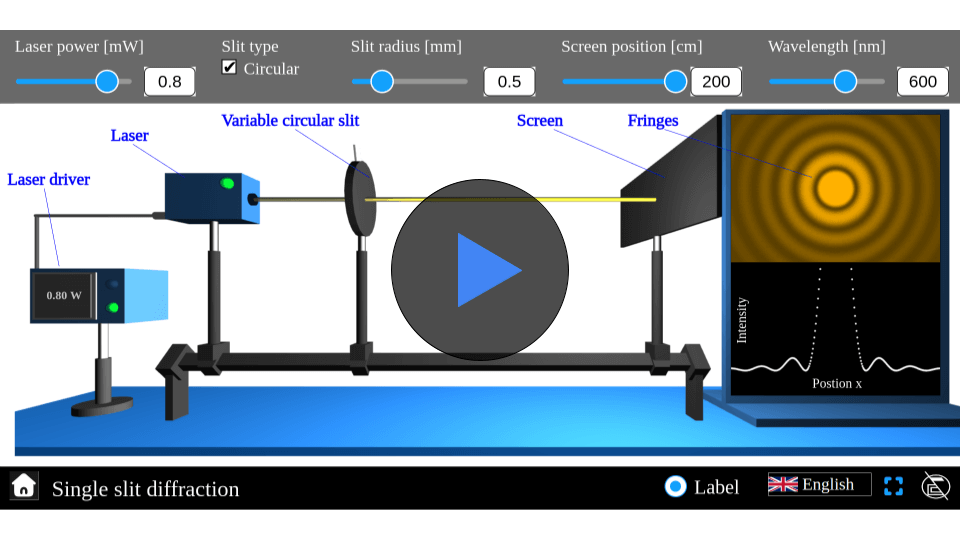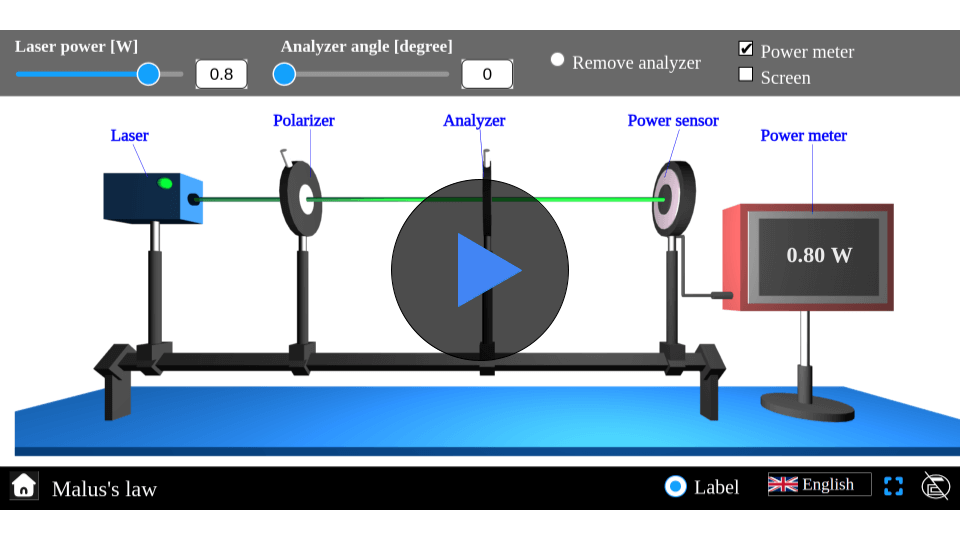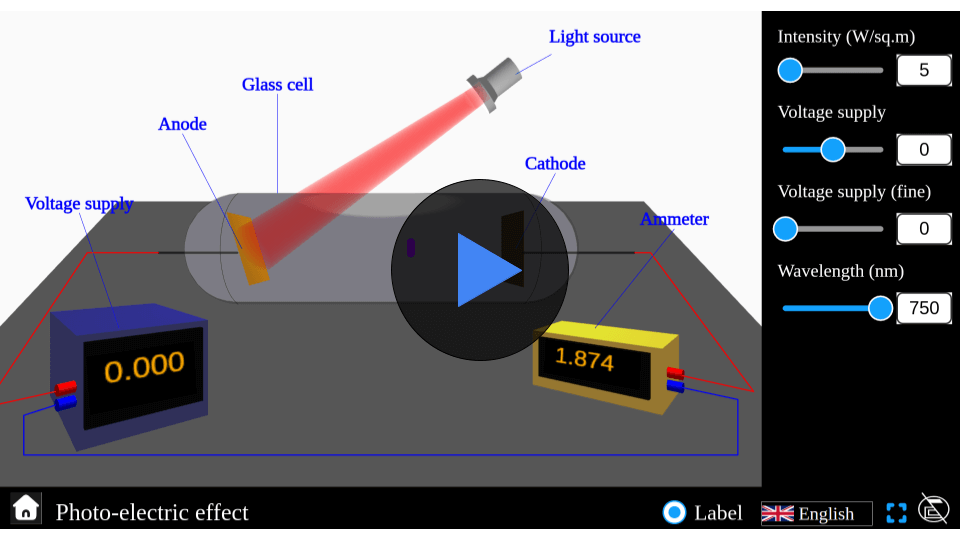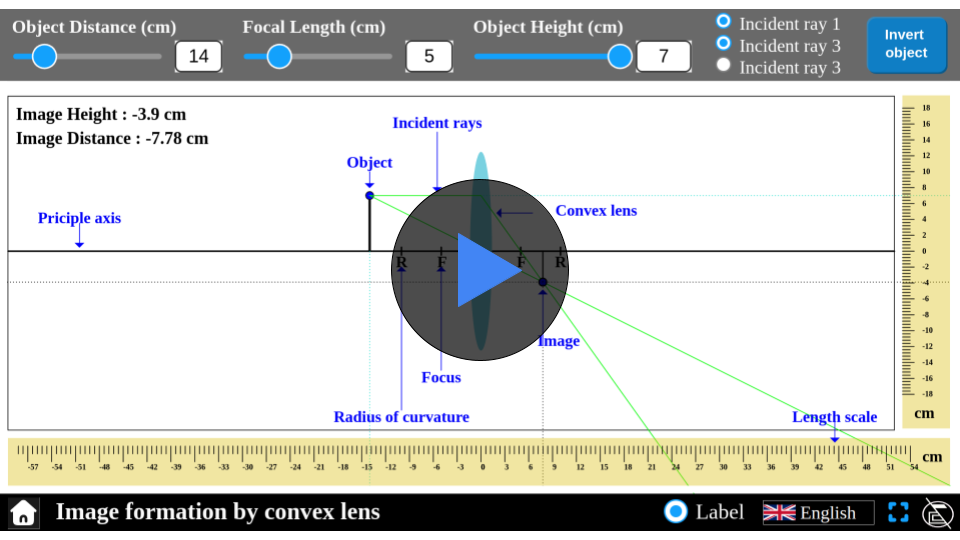Thermal Radiation Simulator
Explore the principles of thermal radiation and investigate how heat is emitted and absorbed by different surfaces. Adjust material properties, surface temperature, and emissivity to visualize radiative heat transfer in real time using our interactive simulator.
Thermal radiation
Physics surrounds us, shaping how energy moves through the world around us, often in ways we don’t notice. Have you ever wondered how heat radiates from a hot surface or how different materials absorb and emit energy? This transfer of energy, governed by the principles of thermal radiation, can be explored and visualized with our interactive simulator. Adjust surface temperatures, materials, and emissivity to observe how radiative heat spreads, and uncover the science behind energy emission and absorption. Start your journey into the fascinating world of thermal radiation — experiment and visualize heat transfer today!
\( P_{\text{net}} = \frac{\alpha \, I \, A_{\text{sphere}}}{4 \pi d^2} – \epsilon \, \sigma \, A_{\text{sphere}} \, \left( T^4 – T_{\text{ambient}}^4 \right) \)
Mathematical description
where
- \( P_{\text{net}} \) is the net power absorbed by the sphere at distance \( d \) (W)
- \( \alpha \) is the absorptivity of the sphere (dimensionless, 0–1)
- \( I \) is the illuminance or power of the source (W)
- \( A_{\text{sphere}} \) is the surface area of the sphere (m²)
- \( d \) is the distance from the source to the sphere (m)
- \( \epsilon \) is the emissivity of the sphere (dimensionless, 0–1)
- \( \sigma \) is the Stefan-Boltzmann constant (5.67×10⁻⁸ W/m²·K⁴)
- \( T \) is the temperature of the sphere (K)
- \( T_{\text{ambient}} \) is the ambient temperature (K)
FAQs on thermal radiation
Qus 1. What is thermal radiation?
Thermal radiation is the transfer of heat in the form of electromagnetic waves, primarily infrared, emitted by all objects with a temperature above absolute zero. Unlike conduction or convection, it does not require a medium and can occur in a vacuum.
Qus 2. What governs the amount of thermal radiation emitted by an object?
The amount of radiation emitted depends on the object’s temperature, surface area, and emissivity. Stefan-Boltzmann law states that the power radiated per unit area is proportional to the fourth power of its absolute temperature:
\( P = \epsilon \sigma A T^4 \)
Qus 3. Which factors affect thermal conductivity?
Emissivity (\(\epsilon\)) is a material property that measures how efficiently an object emits thermal radiation compared to a perfect blackbody. It ranges from 0 (no emission) to 1 (perfect emitter).
Qus 4. Can thermal radiation occur in a vacuum?
Yes. Thermal radiation does not need a medium and can transfer energy across empty space, which is how the Sun’s heat reaches Earth.
Qus 5. How does distance affect thermal radiation from a point source?
The intensity of radiation decreases with the square of the distance from the source (inverse-square law):
\( I \propto \frac{1}{d^2} \)
Qus 6. What are some practical applications of thermal radiation?
Heating systems: Infrared heaters and radiators.
Temperature measurement: Pyrometers and thermal cameras detect radiation to measure temperature remotely.
Space technology: Satellite thermal control and spacecraft design use thermal radiation principles to manage heat.
Everyday life: Cooking with infrared ovens or understanding heat from sunlight.
Qus 7.How is thermal radiation different from conduction and convection?
Conduction requires direct contact between materials, convection requires a fluid medium, whereas thermal radiation can transfer energy without contact or medium, through electromagnetic waves.
Qus 8.Why do black objects heat up faster than shiny objects under the same radiation?
Black objects have higher emissivity, meaning they absorb and emit thermal radiation more efficiently, while shiny surfaces reflect radiation and absorb less heat.
